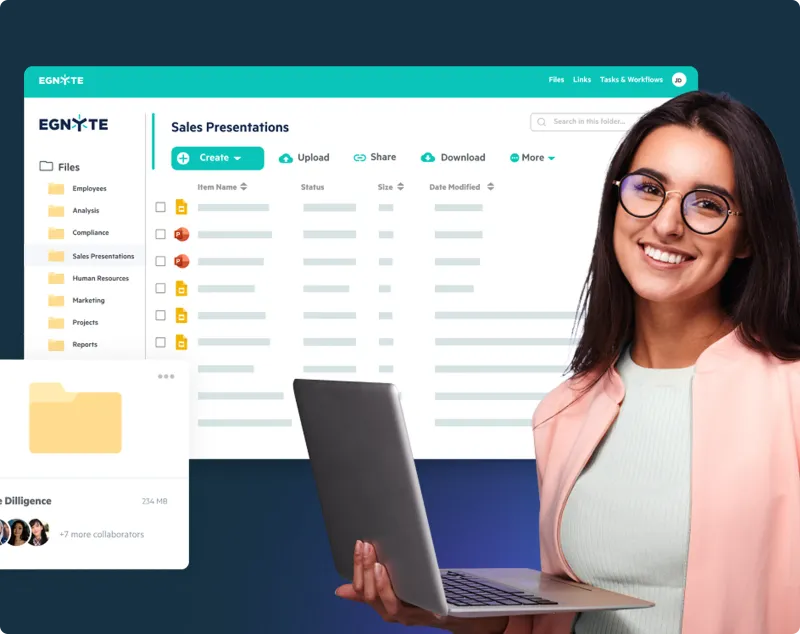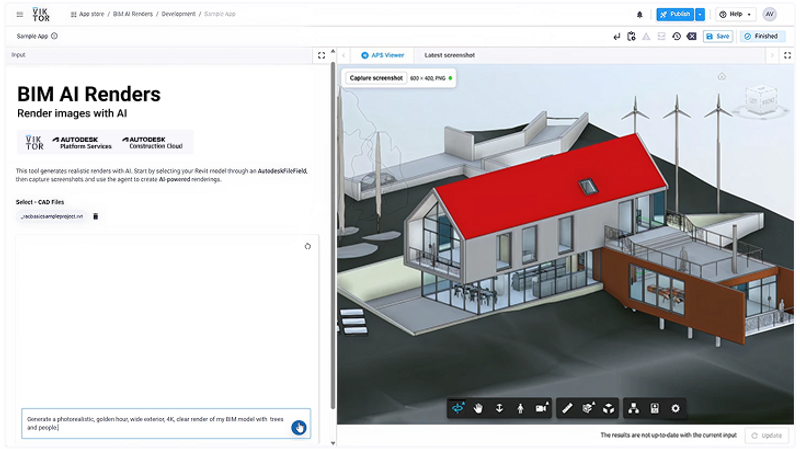The Future of Real Estate and AI
Hosted in October 2023 as part of the AEC+Tech Talk Series, the Future of Real Estate and AI event invited two experts to share their projects, experience, and insight on emerging trends in the larger AECO/Real Estate industry, in the era of new and improved AI frameworks and technologies disrupting and redefining our work. With rather contrasting backgrounds, the speakers offer differing yet complementary perspectives on where the industry is headed, and attempt to break it down to boost awareness about the advent of AI, while encouraging adaptation to maximize productivity and value-creation.
Ram Srinivasan, JLL
Ram is the Managing Director of Consulting at JLL, specialising in Portfolio Optimization, Workplace Strategy, CRE Transformation, and Workforce Planning. He is renowned as a thought leader and keynote speaker in the real estate industry with over fifteen years of experience working with corporate occupiers, real estate developers, and public sector organisations across various industries.
At JLL, Ram’s current focus is on Shaping the Future of Work, where he collaborates with clients around the world on implementing future work strategies: this is contextualised by the emerging hybrid work culture, exponential technologies like Artificial Intelligence, AR, VR, and other emerging paradigms disrupting conventional work practices. He consults on galvanising client teams and workforces to deal with and adapt to changes that we see in the work environment today. Ram also works with JLL’s investment in the Property Technology space.
“AI is civilization-defining technology, much like the steam engine and electricity, since it’s set to drastically change how we live, work, and interact with one another. It’s a huge focus for all of our clients and sits in unison with other facets of workplace transformation in this decade,” Ram explains.
He goes on to mention that there is a significant integration across these facets, although AI-enabled technologies dominate the discussion today. He cites a relevant conclusion from a piece of analysis by IoT Analytics, where a lot of CEO conversations with investors are largely dominated by AI and its many use cases, which is not without reason.

Ram highlights some recent insights unveiled by the IDC - International Data Corporation which forecasts that business users will soon be the proponents of such new AI tools and technologies: how they will achieve it is through no-code/low-code applications. As citizen developers, he says, you don’t need to be a programmer or machine learning expert; with a basic understanding of the space and with good quality labeled data, you can create your own tools, platforms, and applications. Likewise, with an increasing online presence for companies, Ram expects a wide use of intelligent space planning and capacity planning tools for workplaces in 2024, that will drive new trends in handling and working with real estate assets.

Ram consolidates the development of AI tools in real estate into four successive phases. The first is the procurement of clean labelled data that describes a few specific attributes of a business problem. Secondly, you use statistical methods for analytics and to obtain insights from the data. Next, you go on to build predictions from the insights, which is where machine learning comes in. Lastly, you automate some of the decision-making process to seamlessly integrate such tools with your work.
He illustrates how far AI has come in the past few months with GPT-4’s Vision Capabilities. It can now advise you on how to fix a broken HVAC system in your space; or identify the qualitative differences across multiple floor plans and layouts. Further, he mentions how JLL has built its own GPT model for use internally, with projected client applications in the space. It is only surprising that roughly a year ago, none of this would have been possible, and elucidates what a year of AI development could bring to users.

“Through the years, the gap between emerging tech and mature tech has shrunk, and I anticipate a transformation in businesses, particularly in the real estate industry,” Ram stresses.
The Digital is taking a firm foothold in many domains and industries, and that has implications on talent, on workplace, etc. It can be attributed to emerging technology that paves way for workplaces to be dynamic. Further, it enables supporting talent anywhere and at any time, moving towards a more fluidic and agile culture of work.
Ram is very positive about human + AI collaboration, and supports the significant productivity gains that companies have already started witnessing ever since its onset in the past year. He concludes that the future of work is not essentially technology-led, but rather human-led, purpose-driven, and AI-augmented; it is only exciting to anticipate what the future holds!
Eric Cesal, Harvard Extension School
Eric, an architect and expert in post-disaster reconstruction, is a noted author, educator, and designer with extensive experience in international development, economics, and design futurism, recognized for his leadership in disaster recovery programs and contributions to the fields of architecture and climate adaptation.
Interestingly enough, despite not having any formal background in AI, Eric says his experience in community-led post-disaster rebuilding work, developing local capacity to restore local culture and well-being left him with a lot of lessons that inform his perspectives on other things, including the emerging influence of AI on the Real Estate/AECO industries.
“My background and scholarship are in disaster and resilience, and I apply that lens to the potential impacts of A.I. on the AEC value chain,” Eric explains.
Eric elucidates phenomena that often precipitate disasters: 1) neglected infrastructure tending towards decay, 2) emergence of patchwork solutions, 3) widening/deepening of the zone of vulnerability, 4) widespread incredulity, and finally 5) the triggering event. He then recounts how the first four phenomena have been building in the AEC space, and how the dawn of generative A.I. might act as a triggering event, unleashing disaster.
For a long while now, architecture has suffered under poor professional infrastructure in the form of long licensing periods, low pay, and precarious employment.. Patchwork solutions emerge every now and then, but fail to resolve architecture’s chronic professional maladies. for example, those that attempt to optimize workflows and processes, The widespread adoption of BIM, for instance, should have relieved architects of the more mundane parts of the work, and increased their value to clients, but instead led to ever-more complicated drawings sets. The vulnerability of the profession continues to widen, as more and more licensed Architects enter the profession having invested a lot of time and resources to do so, but look out on a future where emerging technologies and AI leave them with less and less to do. At the same time, incredulity regarding the possibilities of A.I. to disrupt the AEC space becomes commonplace. Finally, the sudden surge in the use of cutting-edge AI tools, including GPT models and GenAI platforms like DALL-E and MidJourney, in multiple domains including the AEC industry arrives as a triggering event, disrupting employment and professional boundaries throughout all AEC industries.


Eric stresses on how natural language processing models like GPT have simply become immensely capable in just a span of a year. He illustrates an example where he asks GPT to create two personas: an Architect and a client wanting to build a private residence. He then tasks them with a conversation to generate an architectural design brief, and further, to produce a program and tentative schedules for all the spaces in it. GPT achieves promising results, producing even a budget with a range of estimates for each portion of work in the project. Likewise, he illustrates how GPT was able to reword the design brief as image prompts, and how Midjourney was subsequently able to render an accurate vision of what the artificial client had asked for. To think that an AI model can achieve such results in just a year of its existence leaves one to wonder to what degree our industry will change in the face of this disruption in the coming years.

In the context of some hefty changes in the industry, Eric identifies three points of vulnerability faced by AEC professionals, that seemingly lead to and address the AI disruption.
First, Architects and Contractors/Builders have always had a troubled relationship with new technology. A particular quirk he mentions can’t be further from the truth: we celebrate innovators as they innovate within their own professions, although their innovation is old hat to the rest of the world. For example, the Modernists’ celebrated concrete as a revolutionary material in the early 20th century, although it was invented before the American Civil War. Likewise, Computer-aided Design and Manufacturing has been around in the AEC space since the late 80s although the aerospace industry pioneered it twenty years prior.
Second, Eric says that the AEC space, Contractors in specific, have resisted productivity gains since the onset of the digital revolution over the past 40 years, although every other industry has progressed extensively. In this light, the face of many domains have rapidly changed, whereas AEC ranks second to last in terms of its degree of adoption of similar digital technology. While this strategy has endured throughout the digital age, it trends towards collapse. As the delta between our analog methods and alternative, technologically-leveraged methods continues to grow, it inherently drives the value of external disruption. That, in turn, attracts the attention of entrepreneurs, venture capitalists, and other motivated parties, each of which comes with a plan to displace established industry players.
“The taxi-cab industry, for instance, ignored innovations in mobile payment processing, GPS, social networks, etc., to the point where the value of disrupting that industry swelled to tens of billions of dollars,” Eric says.
The third has got to do with our value proposition. Valuation in Architecture has always been very subjective and sometimes even a bit problematic. But he believes AI can inherently increase the value offered by Architects, even if for no other reason than bringing down the costs associated with our services. Integrating it through multiple project phases, from conception to completion creates a re-defined value chain with lowered costs, building more value over time, as the technology matures.

Eric also envisions a future of work where professional boundaries between Architect, Engineer, Contractor, Builder, etc. progressively blur, fueled by the growing technological capabilities of A.I. With more opportunities for people to get entrepreneurial, the usage of AI will let organizations take a more consolidated approach to all the services they could offer. More seamless relationships can then exist across different professional disciplines, reducing friction between AEC players , while reducing expenses for the client.
Eric sees a very promising way forward for Real Estate with AI by its side, and advises the industry to analyze plausible future scenarios and foresee how project lifecycles are expected to change, to align and adapt ourselves to what is about to come!
Please view the recorded event at this link, and feel free to explore additional videos on our YouTube Channel. You are also invited to discover the latest and most innovative AI and PropTech solutions on our platform.
Recent Articles
Learn about the latest architecture software, engineering automation tools, & construction technologies

Pioneering Technical Report Management (TRM™) for AEC Firms: A Quire Deep Dive
Learn how Quire founder Kelly Stratton is reinventing technical reporting in our latest aec+tech interview, where its purpose-built TRM™ platform, WordBank-powered standardization, AI-driven Smart Search, quality control, and the Lazarus knowledge engine come together to help AEC, environmental, and CRE teams cut reporting time and errors while unlocking their institutional expertise.

Moving to the Cloud: Egnyte’s Staged Approach for Architecture Firms
As projects grow, AEC firms are rethinking data management and collaboration. This article outlines Egnyte’s six-stage Architecture Cloud Journey—a practical roadmap for moving from on-premise systems to secure, collaborative cloud environments. From assessment to continuous improvement, it shows how to streamline workflows, strengthen security, and future-proof with AI-ready infrastructure.

SaaS Founders: Are You Timing Your GTM Right?
This article was written by Frank Schuyer, who brings firsthand experience as a founder in the software and SaaS world. In this piece, he explores how founders can unlock faster growth and stronger market traction by integrating go-to-market strategy (GTM) from the very beginning of product development—rather than treating it as an afterthought.

The VIKTOR App Builder: Putting Automation into Every Engineer's Hands
The VIKTOR App Builder is changing how engineers automate their work. Built on VIKTOR’s secure, enterprise-ready platform, it lets users turn calculations, checks, and post-processing tasks into shareable browser-based apps—no coding required. In this interview, CPO Stijn Jansen explains why the team created it, how it bridges no-code, low-code, and full-code workflows, and what it means for the future of AI-assisted engineering.